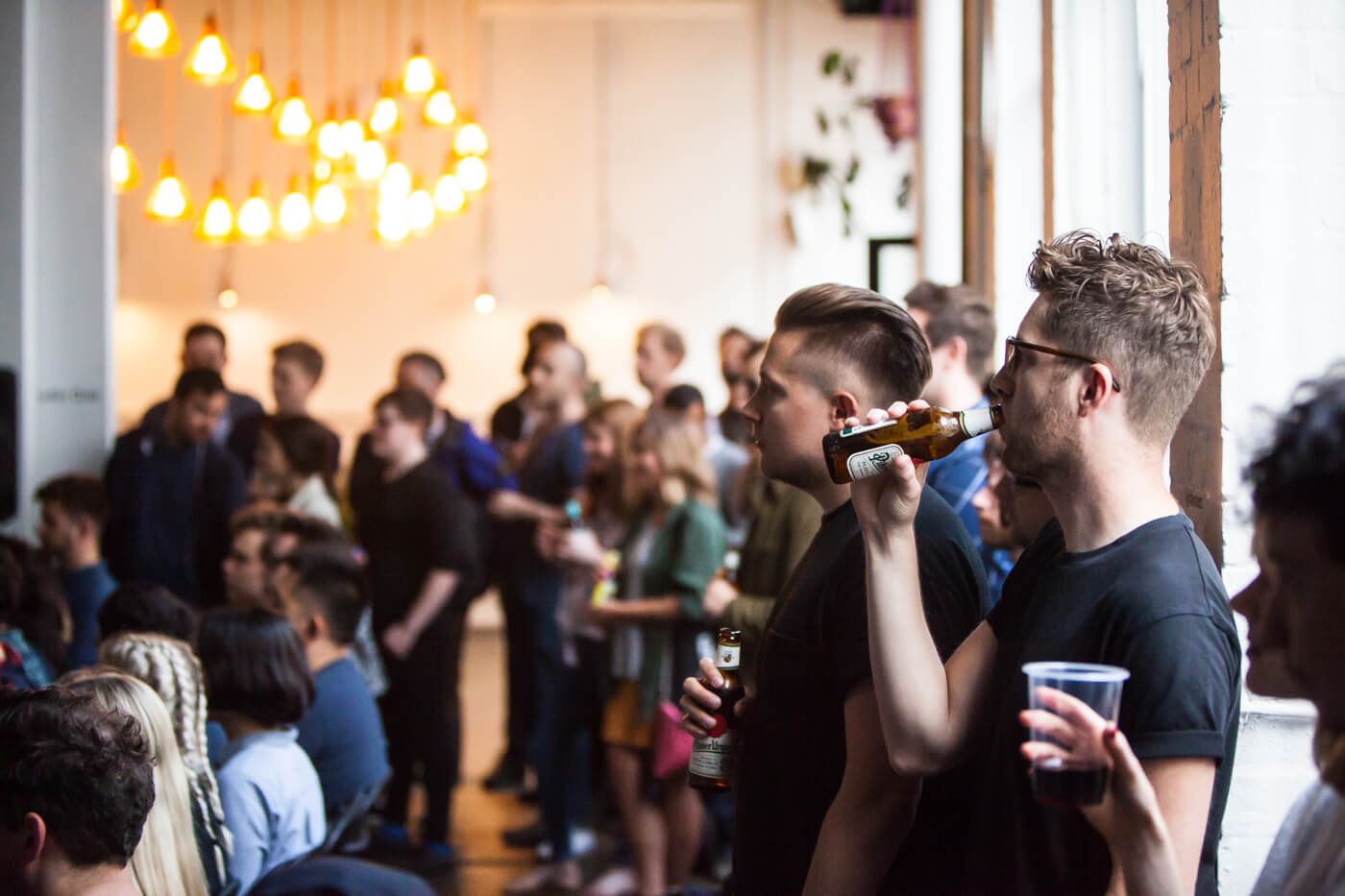Last Thursday we were again proud to sponsor Design Club — a new event series where the creative community figure out what’s next. Following on from April’s inaugural event, this second installment sold out within minutes and packed an equally big punch, featuring Alexis Cuddyre, head of creative and brand at ADAY, as well as Tom Blomfield and Hugo Cornejo from Mondo. Hosted at Protein Studios, and with drinks laid on by DeskBeers from Deliveroo, the evening represented the beating heart of London’s design community.
Fashion and finance — two sectors not traditionally known for their openness, transparency or interest in everyday people. And yet, ADAY and Mondo are two new companies who are building momentum and scaling fast purely by focusing on all of those things.
Alexis, who joined ADAY in June 2015 as the company launched, talked through a year in the life of a new startup — a year which also saw Alexis transition from the agency world, move from London to New York, and throw everything she thought she knew about brand-building out the window. Flashing up a slide featuring several intricate graphs, Alexis revealed how structure, process and planning were the first things she had to let go of when joining a startup. “It’s so good to show these in public, because I spent ages on them before realising there was no time to plan, just do!”, explained Alexis.
Alexis’ key point was around building a life you don’t need a vacation from.
She leapt into ADAY ready to throw everything she had at it, and did so 110%. By redefining her idea of home, and never settling (both personally and professionally) Alexis was able to lead the charge on everything from pop-ups in London and LA, to in-depth wear testing from friends and family, to several iterations of the ADAY web and e-commerce site. But perhaps what’s even more interesting is that ADAY is a fashion brand designed for others committed to that kind of lifestyle: a life where work and play blur. As more people start or join startups, or work independently, the marketplace of products and services they rely on grows too. This cohort of like minded people want things simple, seamless and accessible wherever they are in the world. Alexis’ brilliant talk gave everyone an insight into what it’s really like to live this new sort of life, and how she’s helping to build a company that means you can look and feel great doing it.
Next up, Tom (Mondo’s CEO) talked through the journey of modern banking from handwritten records to mobile pay. Tom founded Mondo with a clear idea of a bank of the future — one that is as smart as your phone and gives you all the information you need about your finances at a glance. As Charlie Warzel wrote in a recent Buzzfeed piece, “For all its complexity and bureaucracy and importance, money, at its core, is really just information”, going on to explain that for traditional banks and retailers, “the payments rush is, in no small part, a data rush”. What makes Mondo different, however, is that they want to make that information useful to users, not brands. “By enabling people to see when they are about to go into their overdraft we help them, but possibly to the detriment of us. We make money when our customers borrow, but we’d rather build their trust”, said Tom.
Being highly visible and recognisable matters but mobile pay puts its emphasis on the interface and experience.
Hugo (Head of Design) spoke too, explaining the role of design in building a modern bank from the ground up. To Tom’s surprise, Hugo admitted that their insanely popular fluorescent orange bank cards are designed to be cool — “they won’t date well”, he said. While being highly visible and recognisable matters now, mobile pay increasingly puts the emphasis on the interface and the experience. Hugo is thinking ahead, building support and interest in the short term in order to maintain trust in the long term.
A friend of Design Club, Ben Maxwell, wrote to the organisers the following day, “I loved the two different angles on the theme of less is more. Less clothes getting in the way. Less bank getting in the way”. We couldn’t have summed it up more neatly. The evening really shed light on the value of reducing complexity, especially in an increasingly complex world. And that’s the opportunity for the creative community right there — we have the skillset to not only see things differently, but to find what really matters and make it visible, tangible and better than ever.
To get early access to tickets for the next Design Club in August, sign up to their newsletter via the website.
Photographs by Joe Watts






